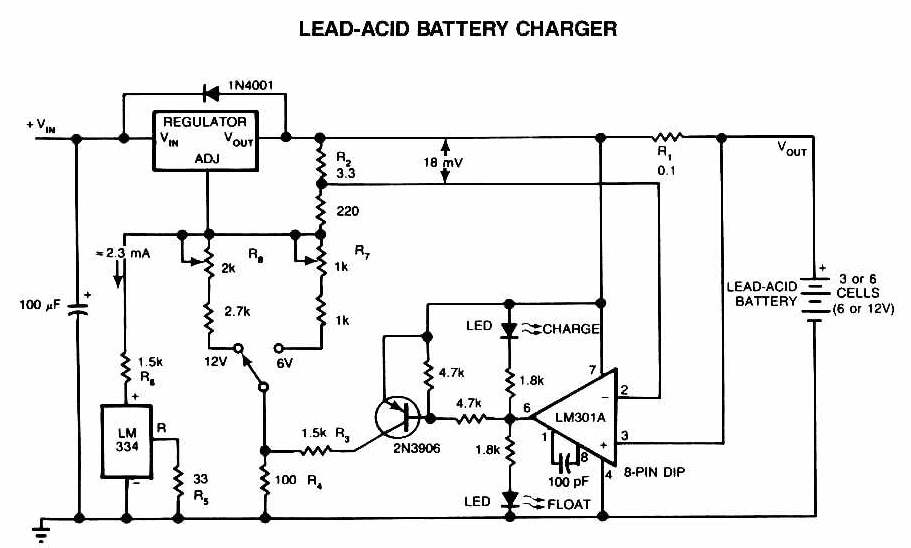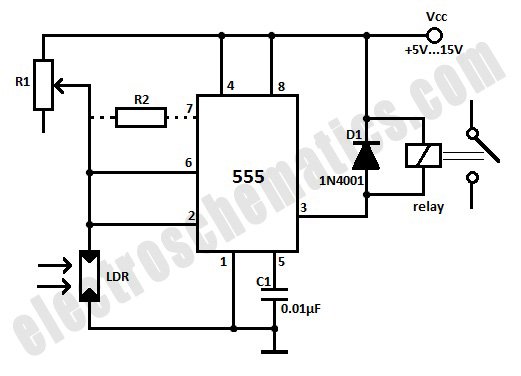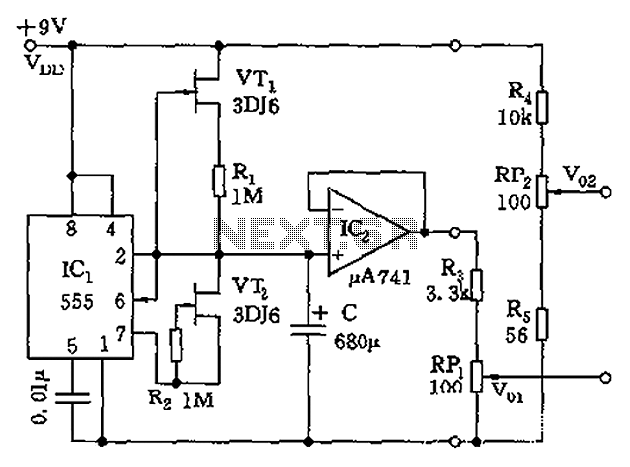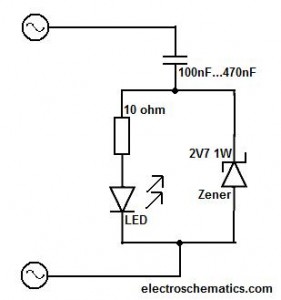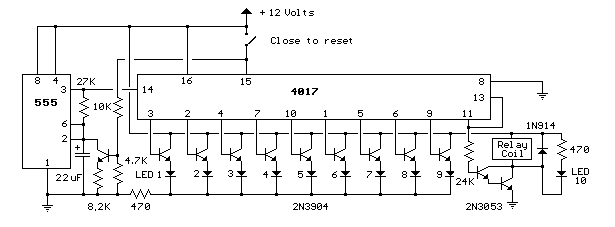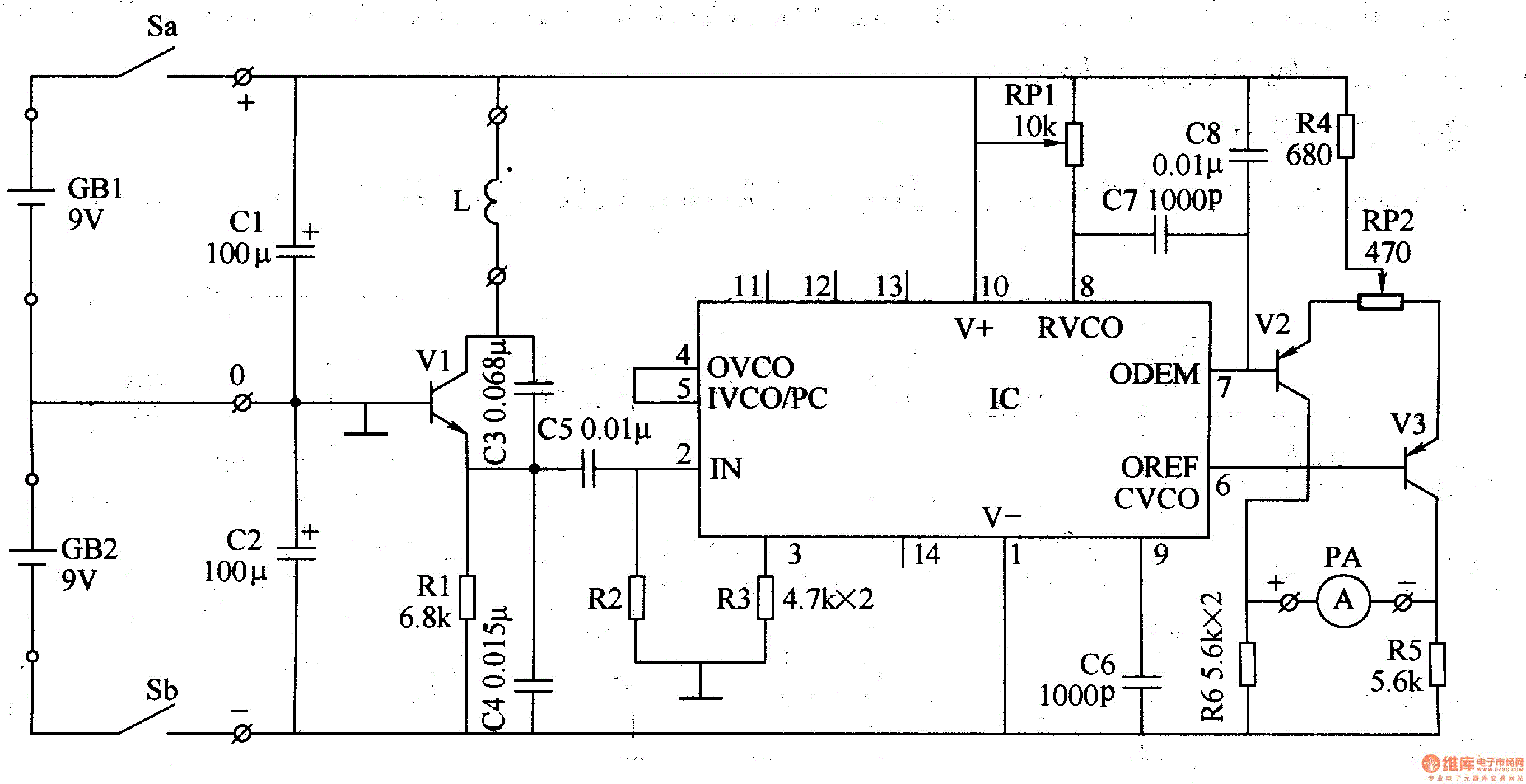
Mobile cell phone detector (sniffer) circuit diagram: engineering and diploma project
.png)
This document describes a simple engineering project circuit for a mobile cell phone detector (sniffer). This compact mobile communication detector can sense the presence of a mobile device, making it suitable for preventing mobile phone usage in private spaces, examination halls, and similar environments. It is also beneficial for identifying mobile phone use related to spying and other activities. The circuit can detect incoming and outgoing calls, SMS, MMS, GPRS usage, and video transmission, even when the mobile phone is set to silent mode. Upon detecting an RF (Radio Frequency) transmission signal from a mobile phone, the device emits a beep sound alarm. The circuit is designed as a sensitive RF detector, with the RF signal diode 1N3491 as a key component. The output signal from the diode is pre-amplified by the BFR96 transistor, which is a high-frequency low-power transistor with significant current gain (approximately 15 dB at 0.5 GHz) and a wide bandwidth. The pre-amplified signal is then passed to the next amplification stage, which utilizes the TL071 IC, a low-noise JFET input operational amplifier characterized by low input bias and offset current. The biFET technology of the TL071 provides a high slew rate. A potentiometer is included to adjust the signal amplitude before it is sent to the amplifier stage built around the LA4440 IC, a two-channel audio power amplifier designed for stereo and bridge amplifier applications. In dual mode, the LA4440 can deliver 6W, while in bridge mode, it can provide 19W. The IC features good ripple rejection of 40 dB, low residual noise, built-in over-voltage and surge protection, and pin-to-pin protection. The RF reception and overall performance of the circuit are influenced by several factors, including the output power of the mobile device, as well as the orientation and position of the cell phone.
The mobile cell phone detector circuit operates primarily by utilizing RF signals emitted by mobile devices during active communications. The RF signal diode (1N3491) is crucial for detecting these signals, as it converts the RF energy into a detectable voltage. The BFR96 transistor amplifies this voltage, ensuring that even low-level signals can be effectively processed. The TL071 operational amplifier further enhances the signal quality by minimizing noise and providing a stable gain, which is essential for accurately detecting the presence of mobile communications.
Adjustments to the sensitivity of the circuit can be made using the potentiometer, allowing users to tailor the detection range based on specific requirements. The LA4440 amplifier stage is responsible for driving the alert mechanism, which is typically a simple buzzer or speaker that produces an audible beep when mobile activity is detected. This feedback loop is vital for the practical application of the detector, as it provides immediate notification of unauthorized mobile usage.
Overall, the design of the mobile cell phone detector circuit emphasizes sensitivity, reliability, and ease of use. Its compact size and straightforward construction make it an accessible project for engineers and hobbyists alike, while its functionality addresses a growing need for monitoring mobile device usage in sensitive environments.Here is a simple engineering project circuit of handy mobile cell phone detector (sniffer). This pocket-sizedmobile communication detector or sniffer can sense the existence of a mobile device. So it can be used to avoid the use of mobile phones in private rooms, examination halls, etc. It is also useful for detecting the use of mobile phone for s pying and other related activities. The circuit can detect incoming and outgoing calls, SMS, MMS, GPRS usage and video transmission even when the mobile phone is set aside in silent mode. The instant bug detects RF (Radio Frequency) transmission signal from a mobile phone, it produces a beep sound alarm.
The circuit is able to detect all forms of mobile phone activity even when it is in silent mode. The circuit is designed as a sensitive RF detector. The RF signal diode 1N3491 forms the major element. Output signal from the diode is pre amplified by the transistor BFR96. It is a high frequency (Microwave frequency) low power transistor with huge current gain (approximately 15dB at 0. 5GHz) and bandwidth. The pre amplified signal is fed to next amplifier stage built around IC TL071, it is a low noise JFET input op amp with low input bias and offset current.
The biFET technology gives high slew rate to the IC. The next potentiometer is used to vary the signal amplitude, then it is fed to amplifier stage built around IC LA4440, it is a two channel audio power amplifier with inbuilt dual channels for stereo and bridge amplifier applications. In dual mode the IC LA4440 gives 6W, where as in bridge mode it provides 19W. It has good ripple rejection of 40dB, small residual noise, built in over voltage and surge voltage protection, and pin to pin protection.
The RF reception and performance of the circuit is dependent on many factors such as output power from the mobile device, orientation and position of the cell phone. 🔗 External reference
The mobile cell phone detector circuit operates primarily by utilizing RF signals emitted by mobile devices during active communications. The RF signal diode (1N3491) is crucial for detecting these signals, as it converts the RF energy into a detectable voltage. The BFR96 transistor amplifies this voltage, ensuring that even low-level signals can be effectively processed. The TL071 operational amplifier further enhances the signal quality by minimizing noise and providing a stable gain, which is essential for accurately detecting the presence of mobile communications.
Adjustments to the sensitivity of the circuit can be made using the potentiometer, allowing users to tailor the detection range based on specific requirements. The LA4440 amplifier stage is responsible for driving the alert mechanism, which is typically a simple buzzer or speaker that produces an audible beep when mobile activity is detected. This feedback loop is vital for the practical application of the detector, as it provides immediate notification of unauthorized mobile usage.
Overall, the design of the mobile cell phone detector circuit emphasizes sensitivity, reliability, and ease of use. Its compact size and straightforward construction make it an accessible project for engineers and hobbyists alike, while its functionality addresses a growing need for monitoring mobile device usage in sensitive environments.Here is a simple engineering project circuit of handy mobile cell phone detector (sniffer). This pocket-sizedmobile communication detector or sniffer can sense the existence of a mobile device. So it can be used to avoid the use of mobile phones in private rooms, examination halls, etc. It is also useful for detecting the use of mobile phone for s pying and other related activities. The circuit can detect incoming and outgoing calls, SMS, MMS, GPRS usage and video transmission even when the mobile phone is set aside in silent mode. The instant bug detects RF (Radio Frequency) transmission signal from a mobile phone, it produces a beep sound alarm.
The circuit is able to detect all forms of mobile phone activity even when it is in silent mode. The circuit is designed as a sensitive RF detector. The RF signal diode 1N3491 forms the major element. Output signal from the diode is pre amplified by the transistor BFR96. It is a high frequency (Microwave frequency) low power transistor with huge current gain (approximately 15dB at 0. 5GHz) and bandwidth. The pre amplified signal is fed to next amplifier stage built around IC TL071, it is a low noise JFET input op amp with low input bias and offset current.
The biFET technology gives high slew rate to the IC. The next potentiometer is used to vary the signal amplitude, then it is fed to amplifier stage built around IC LA4440, it is a two channel audio power amplifier with inbuilt dual channels for stereo and bridge amplifier applications. In dual mode the IC LA4440 gives 6W, where as in bridge mode it provides 19W. It has good ripple rejection of 40dB, small residual noise, built in over voltage and surge voltage protection, and pin to pin protection.
The RF reception and performance of the circuit is dependent on many factors such as output power from the mobile device, orientation and position of the cell phone. 🔗 External reference
